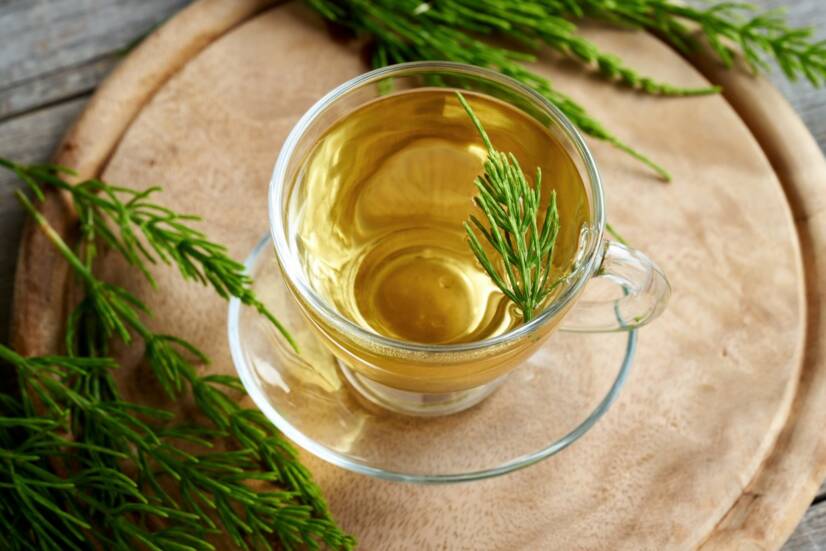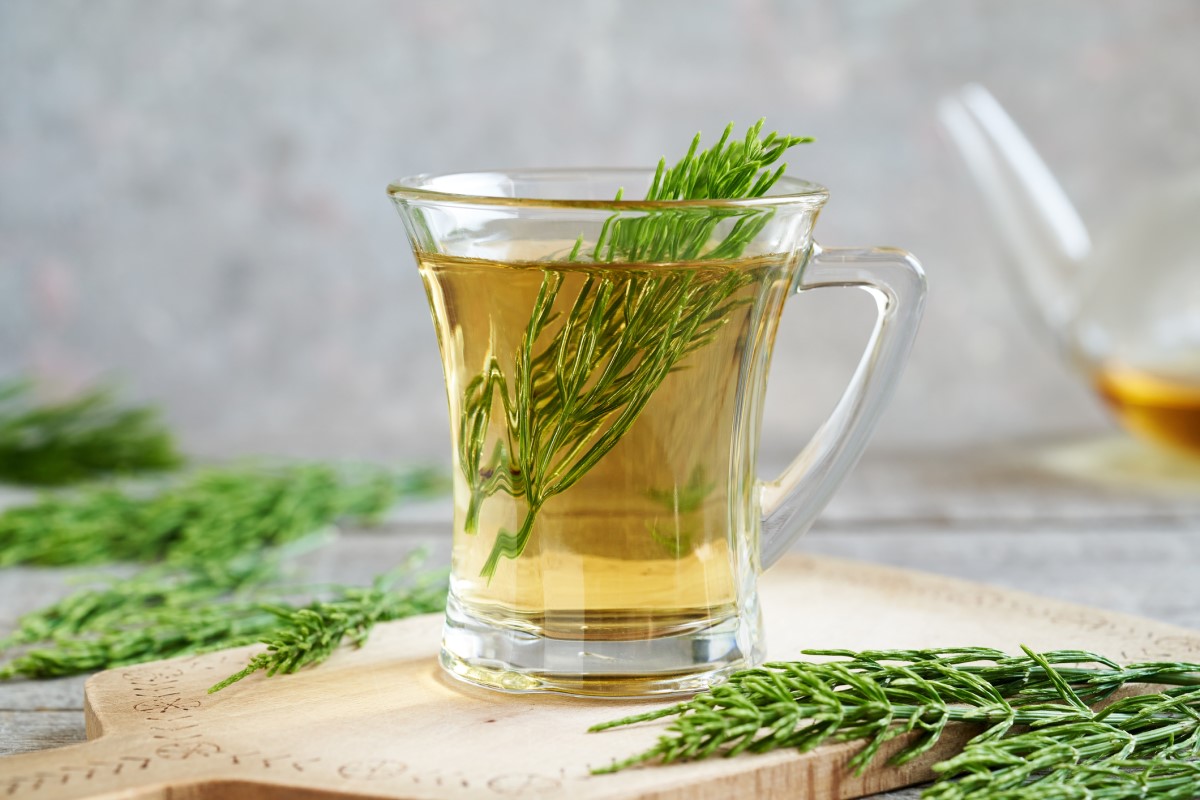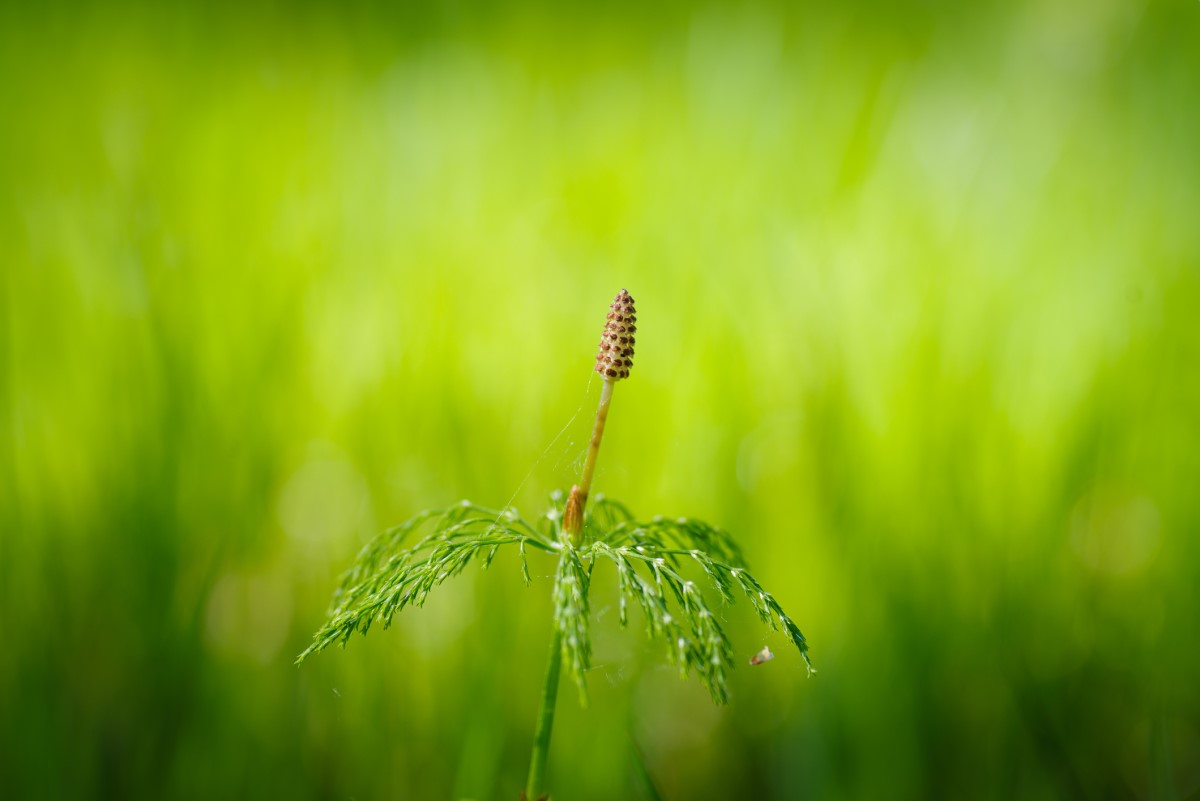- Phytochemistry and Pharmacology of the Genus Equisetum (Equisetaceae): A Narrative Review of the Species with Therapeutic Potential for Kidney Diseases, Thaise Boeing, Karyne Garcia Tafarelo Moreno, Arquimedes Gasparotto Junior, Luisa Mota da Silva, and Priscila de Souza (ncbi.nlm.nih.gov)
- From my home pharmacy, Maria Trebenova, ISBN 978-80-551-8435-7, published in 2013
- Otto's Encyclopedia Our Flora Wet Meadows, Vlastik Rybka, Radka Joskova Jedličková, ISBN 978-80-7451-449-4, published in 2015
- Herbarium or from Alchemilla to Judas, Jaroslava Bednářová, ISBN 978-80-8142-670-4, published in 2017
Horsetail: what are its effects and uses?

Horsetail is found in several species around the world. One of the most widespread species is horsetail. What are its effects and importance for humans?
Characteristics
Horsetail: its effects, its importance for humans, what it looks like, what species of horsetail we know and many other interesting information.
The horsetail family is widely distributed and found all over the world. These plants are not only found in Australia and Antarctica. It is even believed to be the oldest non-extinct plant species on our planet.
Its origins date back to prehistoric times 300 million years ago.
Today, we know about 30 species of horsetails.
The Latin name equisetum is made up of two words.
Equi means horse and setum means tail.
Therefore, horsetail is also known as horse tail in many countries.
Horsetails are perennial herbs. Because they are non-flowering plants, they reproduce by tiny spores, not by seeds.
They are smaller plants, reaching a maximum height of one metre.
Horsetail prefers moist, sandy and clay soils, which is why it can be found in forest recesses or on the banks of streams. It also grows in meadows or even on railway slopes.
One of the best known species is the horsetail.
However, there are other species around the world:
- Wood horsetail
- Southern horsetail
- Moore's horsetail
- Moore's horsetail
- Winter Horsetail
- Meadow Horsetail
- Marsh horsetail
In this article, we take a closer look at horsetail.
The interesting thing about horsetail is that it has two types of stems - spring and summer.
The spring stalk grows out of the soil in early spring. It is 15 to 20 centimetres long and has a yellow-brown colour. At the end of the stalk is an ear-shaped formation containing spores. The spores are carried by the wind. Once the spore cavity is emptied, the spring stalk dies.
The spring stem is replaced by the summer stem, which grows on the same rootstock in late April to early May. The summer stem is usually 40 to 60 cm taller and green in colour. It does not have the typical leaves. The small, thin leaves are slit-shaped and resemble juniper or the aforementioned horse's tail.
It is the summer stem that is important for its medicinal properties.

Internal use
Most often, horsetail is used in the form of decoctions and teas prepared from the aerial parts of the herb.
The tea is prepared by pouring a heaped teaspoon of horsetail in hot water. It is left to infuse for a while and then strained.
However, extra care should be taken as horsetail contains the enzyme thiaminase.
This can cause a deficiency of vitamin B1 in the body. The effect of this enzyme can be removed by cooking or drying.
Overall, horsetail tea is well tolerated without serious side effects.
However, mild side effects may occur, such as:
- diarrhea
- vomiting
- abdominal pain
- allergic dermatitis
- redness of the skin

Horsetail is mainly used in traditional medicine for its diuretic properties. Which means that it drains our body.
However, it is also used for:
- urogenital diseases
- kidney diseases
- kidney stones
- inflammation of the urethra
In addition to the above urogenital diseases, its effects are also used in:
- Inflammation
- to promote wound healing
- rheumatic diseases
- inflammations of the prostate
- hypertension
Probably the best known species of the horsetail genus is the horsetail - Equisetum arvense in Latin. Its diuretic effect has been confirmed by clinical studies on animals.
In addition to the already mentioned diuretic effect, it has other properties, namely:
- antioxidant
- anti-cancer
- antimicrobial
- anticonvulsant
- acts as a smooth muscle relaxant
- sedative
- anxiolytic
- antinociceptive
- anti-inflammatory
- antidiabetic
- and inhibits platelet aggregation
Because horsetail has diuretic effects, it can help reduce high blood pressure. However, in the case of high blood pressure, treatment should always be consulted with a doctor. However, you cannot rely on horsetail tea alone. If you suffer from hypertension, address your condition with a specialist.
If we want to break down horsetail chemically, it contains many active substances.
For example..:
- alkaloids
- flavonoids
- phenols
- phytosterols and sterols
- saponins
- tannins
- silicic acid
- triterpenoids
- and volatile oils
Another well-known plant is the giant horsetail.
It is used in traditional medicine especially in Latin America - Brazil, Bolivia, Chile, Peru.
It is used to treat:
- diarrhea
- heartburn
- urogenital disorders
- inflammation
- rheumatic diseases
- obesity
- and also previous as a diuretic
However, care should be taken with the horsetail (Equisetum telmateia). This horsetail is poisonous and tea from it should not be drunk. It is, however, suitable for external use. You can recognise it by the fact that its stems are as thick as a finger.
Equisetum myriochaetum (Mexican horsetail) has significant hypoglycaemic effects. Patients with type 2 diabetes were given a dose (0.33 g/kg) of the dried plant. This single dose significantly reduced glucose levels in these patients. Horsetail therefore has very great potential in the treatment of diabetes mellitus.
Horsetail as a cure for cancer?
Horsetail appears to be a promising source of cancer-fighting agents. Several studies have demonstrated the cytotoxic effects of horsetail extracts.
An ethanolic extract has shown cytotoxic effects on:
- cervical cancer cells
- colorectal adenocarcinoma cells
- breast cancer cells
An aqueous extract of sterile horsetail stems had cytotoxic effects on leukaemia cells. This effect was concentration dependent.
Of course, these are all studies so far.
Although they sound very favourable, we should not rely on such treatment alone. You should always consult your doctor about your health condition and subsequent treatment.
Use of horsetail essential oils
Horsetail essential oil has a broad antimicrobial effect.
It acts against bacteria:
- Staphylococcus aureus
- Escherichia coli
- Klebsiella pneumoniae
- Pseudomonas aeruginosa
- Salmonella enteritidis.
Its effects against:
- Aspergillus niger
- Candida albicans
External use
What are the benefits of horsetail in external use?
Sweating feet
A horsetail bath or tincture is very effective for foot sweating. Both the bath and tincture can be used daily, but usually only one of these methods is sufficient.
It is ideal to prepare the bath at least 12 hours in advance and then warm and strain it.
The tincture is prepared by soaking the horsetail in 40% alcohol. It is usable after a two-week infusion.
Stop bleeding
Horsetail is also very effective in stopping bleeding. Whether it is bleeding from wounds or bleeding from the nose.
For nosebleeds, a cold compress with the scent of horsetail helps.
For bleeding from superficial wounds, we can wash the wound with a decoction.
Skin rashes
Horsetail can also be used for skin problems.
It is ideal to prepare a decoction. Pour four heaped teaspoons into half a litre of water. Leave to infuse for half a minute and strain. Then wash the face or other parts of the skin with it.
It can also be used as a poultice. Soak a towel or other soft cloth in the steaming water. Apply the poultice to the problem areas.
Dandruff
Horsetail also helps to remove dandruff. Hair should be washed with the decoction every day. It should not be rinsed with water afterwards. The procedure for preparing the decoction is the same as for skin problems.
Heel spur
Horsetail can also help with pain caused by a spur. The pain is relieved when the foot with the spur is bandaged.
First, warm the horsetail over steam. When it is warm and soft, place it on the foot. Then wrap it with a cloth. It is good to keep the foot warm. And leave this wrap on all night.
A foot bath is also helpful for problems. Soaking the horsetail for at least 12 hours is ideal. Then strain the extract and warm it up.
Angina and inflammation of the oral cavity
In folk medicine, a decoction of horsetail was used as a gargle. It was used for sinusitis or tonsillitis. We have already mentioned that horsetail also has antimicrobial properties.
In some cases - if the inflammation was caused by microbes - it could therefore help to cure it.
Thanks to its high silica content, horsetail can also be used as a fine sandpaper for cleaning various surfaces.
Harvesting and storage
For its effects, the green part is harvested and used. It is harvested specially from June through the summer until September.
Ideally, the sage is pre-dried for one day in the sun. It is then dried slowly, in the shade, at a maximum temperature of 60 °C.
It is a good idea to turn it from time to time.
If we have followed the correct procedure, the florets will stay green and last for two to three years.
Pregnancy and breastfeeding
Although toxicity has not been confirmed in clinical studies (at an average dose of 5 mg/kg), the use of horsetail-containing products during pregnancy and lactation is not recommended.
The main reason is that there is very little information on use during this period.
In addition, horsetail contains the aforementioned enzyme thiaminase, which breaks down vitamin B1.
Differences or how to distinguish between horsetail species
- Swamp horsetail (Equisetum palustre) - Unlike horsetail, the summer (green) stalk is less branched.
- It branches mainly in the central part.
- The upper and lower parts are mostly without lateral branching.
- The spikelet is brown and forms at the end of the green branched clump.
- It contains the poisonous alkaloid palustrine, which is not lost by drying and may cause diarrhoea or muscle weakness.

- Horsetail(Equisetum fluviatile) is much more robust and not very branched. In addition, it has a hollow, thick and almost rounded stem.
Horsetail and its side effects on the liver
Although there have been many studies on the effects of horsetail on the liver, its hepatotoxicity has not been confirmed.
No liver-related side-effects have been observed when taking a normal daily dose (up to 6 grams).
On the other hand, it is possible that excessive use of horsetail preparations may have adverse effects on the liver. This is especially true if the person suffers from existing liver disease or cirrhosis.
Although the use of horsetail is widespread and popular, the therapeutic potential and safety of the preparations have yet to be scientifically investigated and confirmed.
Interesting resources










